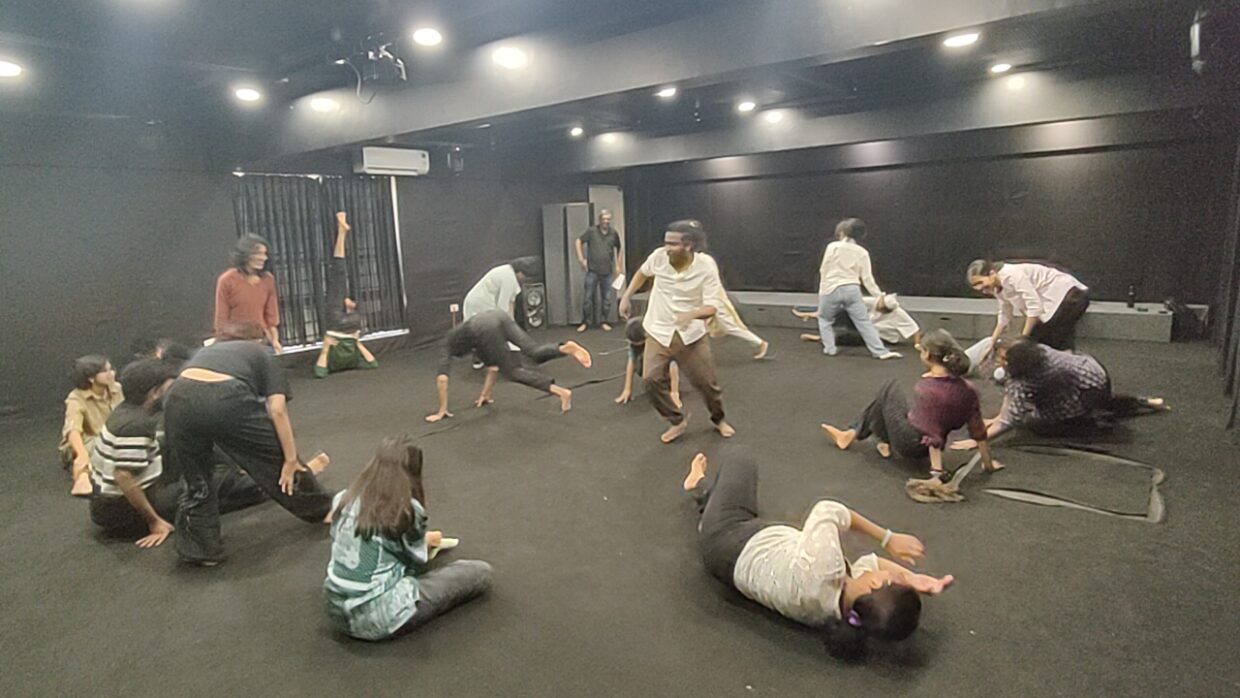Z has always faded into the walls of the Black Box. The Kind Man studied architecture to design the Black Box because he wanted it to do some very important things that others probably wouldn’t understand. They might, but he didn’t want to gamble on that chance, because money will never not be a problem, and generosity runs low after it runs high. Once the Black Box was built, the Mad Beautiful Woman strode in, and burned so fiercely that the Black Box caught fire, and ever since then, there was light in the Black Box.
The Black Box is an interesting place, because it doesn’t swallow people. Instead, it pushes them to the light available. It is very hard to hide in the Black Box, but Z does it effortlessly. You can map the desire to turn invisible, I am learning. It shows itself in strange ways. I used to read these wrongly. G and I were talking recently about how, sometimes, bodies curve into themselves out of an intrinsic desire to not be seen.
Some of my kids shrink into themselves when they talk to me. I used to think this was respect. But Q did it yesterday, and I felt uncomfortable, because shrinking like that meant that Q wasn’t standing tall. I didn’t like that, because Q smiles shyly, shows me his writing very hesitantly in class, smiles incandescently when I tell him I love what he’s written, plays the heartbeat-quickening parai, and tells me, “Ma’am, next time, I will definitely come for JAM, promise, Ma’am, I just need to take my clothes from the terrace first,” and I need him to stand as tall and slouch as languorously as he wants, and never out of a respect that elevates others by putting himself down.
There is an art to hiding. If you don’t hide carefully, parts of yourself get erased.
Z disappears even in the Black Box. His body knows how to fade in, fade out, slink away. I never thought that this art of disappearing could mean that he was proficient in the art of the body. Then, I saw Z in a mime workshop, and Z glowed. The fire of the Black Box danced on his skin. Z broke the circle of bodies gesticulating to come close to the centre, to the most visible spot. He smiled, cried, defined walls and boxes, and broke out of what I had thought was his.
In the workshop, N told us: Imagine you are wearing a magic mask. Map it, explore its contours, run your hands over it, poke your fingers into the holes for eyes, and then put it on your face. Aha! The mask, now it makes your face happy, now it makes it sad, now you are disgusted, now angry. And now, you want to take it off, but it is stuck. You pull and pull and try to peel it off, but nothing quite works. Nothing, nothing, nothing—and Now! Your pull is successful, and finally the mask is off. You heave a sigh of relief.
We moved on in the workshop, but I wondered, did pulling off the mask wrench the flesh off my skin?
Mime is an art of illusion, we were told in the workshop. Illusion and imagination. Convince yourself so hard you convince others. Why didn’t I see Z before? How did I let him blend into the walls, and not see that as art? Why did I think invisible was his face, when perhaps it was the mask that he needed to choose to take off? And after the mask came off, did it hurt to put it back on?
I want to ask Z, but he moves towards the wall when I move towards him. He smiles too. We both know the same secret after all, and that means that we can smile, and that that smile isn’t a mask.
Cynthia
Latest posts by Cynthia (see all)
- And sometimes the mask comes off - 9th October 2024





